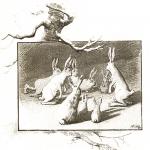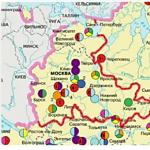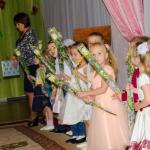Transition from the OKP classifier to the OKPD2 classifier. All-Russian classifiers assigned to the Ministry of Economic Development of Russia Search for the OKP OKPD2 key by product name
From the Government Decree Russian Federation dated November 10, 2003 No. 677 “On all-Russian classifiers of technical, economic and social information in the socio-economic field”:
The development of all-Russian classifiers is ensured by federal executive authorities and is carried out in agreement with the Ministry of Industry and Trade of the Russian Federation, the Federal Agency for Technical Regulation and Metrology, the Federal State Statistics Service and the Ministry economic development Russian Federation.
The use of all-Russian classifiers is mandatory when creating state information systems and information resources, as well as during interdepartmental exchange of information and in other cases established by the legislation of the Russian Federation. All-Russian classifiers are used in legal acts in the socio-economic field to unambiguously identify objects of legal relations.
Determination of the code of a classification object related to the activities of an economic entity using the all-Russian classifier is carried out by the economic entity independently by assigning this object to the corresponding code and position name of the all-Russian classifier, except for cases established by the legislation of the Russian Federation.
All-Russian classifier of species economic activity, products and services OK 004-93 (OKDP)
All-Russian classifier of types of economic activities, products and services OK 004-93 (OKDP)" style=" display: none;">
developed taking into account the recommendations of the UN Statistical Commission. The construction of the OKDP is based on the International Standard Industrial Classification (ISIC) and the international Central Products Classification (CPC). Part II and Part III are currently used to classify products and services. Parts I and IV were canceled by Rosstandart order No. 454 of November 6, 2001 “On the adoption and implementation of OKVED”.
All-Russian Classifier of Economic Regions OK 024 - 95 (OKER)
All-Russian Classifier of Economic Regions OK 024 - 95 (OKER)" style=" display: none;">
is a systematic list of regional economic groupings of objects of administrative-territorial division of Russia. The objects of classification in OKER are different kinds economic regions. At the same time, an economic region is understood as a set of objects of the administrative-territorial division of the country that have a number of common natural and economic characteristics.
All-Russian Classifier of Types of Economic Activities OK 029-2001 (NACE Rev. 1) (OKVED)
All-Russian Classifier of Types of Economic Activities OK 029-2001 (NACE Rev. 1) (OKVED)" style=" display: none;">
built on the basis of harmonization with the official version in Russian of the Statistical classification of economic activities in the European Economic Community (hereinafter - NACE Rev. 1) - Statistical classification of economic activities in the European Community (NACE Rev. 1) by saving it in OKVED from NACE Rev. . 1 codes (up to four characters inclusive) and names of the corresponding positions without changing the scope of concepts. Features that reflect the needs of the Russian economy in detailing types of activities are taken into account in OKVED groupings with five- and six-digit codes.
OKVED is used to classify and code the types of economic activities declared by business entities during registration, determine the main and other types of economic activities actually carried out by business entities, develop regulations relating to government regulation individual species economic activity, implementation of government statistical observation by type of development activity economic processes, preparing statistical information for international comparisons, coding information on types of economic activities in information systems and resources, the unified state register of enterprises and organizations, other information registers, as well as to meet the needs of public authorities and management for information on types of economic activities when solving analytical problems.
All-Russian Classifier of Types of Economic Activities OK 029-2007 (NACE Rev. 1.1) (OKVED)
All-Russian Classifier of Types of Economic Activities OK 029-2007 (NACE Rev. 1.1) (OKVED)" style=" display: none;">
built on the basis of harmonization with the official version in Russian of the Statistical classification of economic activities in the European Economic Community (hereinafter referred to as NACE Rev. 1.1) - Statistical classification of economic activities in the European Community (NACE Rev. 1.1) by saving it in OKVED from NACE Rev. . 1.1 codes (up to four characters inclusive) and names of the corresponding positions without changing the scope of concepts. Features that reflect the needs of the Russian economy in detailing types of activities are taken into account in OKVED groupings with five- and six-digit codes.
The objects of classification in OKVED are types of economic activity.
It is used to carry out state statistical monitoring by type of activity over the development of economic processes, and to prepare statistical information for comparison at the international level.
All-Russian classifier of products by type of economic detail OK 034-2007 (KPES 2002) (OKPD)
All-Russian classifier of products by type of economic detail OK 034-2007 (KPES 2002) (OKPD)" style=" display: none;">
built on the basis of harmonization with the Statistical Classification of Products by Activity in the European Economic Community, 2002 version (CPA 2002) by maintaining without changes in the OKPD from CPA 2002 codes (up to six characters inclusive) and the scope of concepts of the corresponding positions. Features that reflect the needs of the Russian economy for product detailing are taken into account in OKPD groupings with 7-9-bit codes.
The objects of classification in OKPD are products (services, works).
OKPD can be used to classify and code products (services, works) for the purposes of state statistics, as well as to prepare statistical information for comparisons at the international level.
All-Russian Classifier of Types of Economic Activities OK 029-2014 (NACE Rev. 2) (OKVED 2)
All-Russian Classifier of Types of Economic Activities OK 029-2014 (NACE Rev. 2) (OKVED 2)" style=" display: none;">
built on the basis of harmonization with the official version in Russian of the Statistical classification of economic activities in the European Community (Version 2) - Statistical classification of economic activities in the European Community (NACE Rev.2) by maintaining it in OKVED 2 (from NACE Rev.2 ) codes (up to four characters inclusive) and names of the corresponding groupings without changing the scope of concepts. Features that reflect the needs of the Russian economy for detailing types of economic activities are taken into account in OKVED 2 groupings at the level of groupings with five- and six-digit codes. The objects of classification in OKVED are types of economic activity.
OKVED 2 is used to classify and code types of economic activities declared by business entities during registration, determine the main and additional types economic activities carried out by business entities, the development of normative legal acts relating to state regulation of certain types of economic activities, the implementation of state statistical monitoring by type of activity of the entities national economy And social sphere, preparation of statistical information for comparisons at the international level, coding of information by type of economic activity in information systems and resources, meeting the needs of government authorities and management for information on types of economic activity when solving analytical problems.
All-Russian classifier of products by type of economic activity 034-2014 (KPES 2008) (OKPD 2)
All-Russian classifier of products by type of economic activity 034-2014 (KPES 2008) (OKPD 2) "style=" display: none;">
built on the basis of harmonization with the Statistical Classification of Products by Activity in the European Economic Community, 2008 version (CPA 2008) by maintaining without changes in OKPD 2 from CPA 2008 codes ( up to six characters inclusive) and the volume of concepts of the corresponding positions. However, there are cases for which national characteristics are reflected by changing the CPA 2008 groupings with 2 - 6-bit codes. Features that reflect the needs of the Russian economy for product detailing are taken into account in OKPD 2 groupings with 7 9-bit codes.
The objects of classification in OKPD 2 are products (services, works). OKPD 2 is intended to provide information support for the classification and coding of products (services, works) for the purposes of state statistics, the development of regulatory legal acts relating to state regulation of certain types of economic activities, the implementation of a set of accounting functions within the framework of work on state statistics related to meeting the needs of authorities state power and management in information about products by type of economic activity when solving analytical problems, ensuring a system of state contracting and wholesale trade in the domestic market, preparing statistical information for comparisons at the international level, placing orders for the supply of goods, performing work (rendering services) for state and municipal needs, taxation, ensuring the classification of fixed assets used in the All-Russian Classifier of Fixed Assets, standardization and mandatory confirmation of conformity products, classification and coding of services provided to the population by business entities.
Preparations for the transition to the new designations of the All-Russian Classifiers (OKPD2), which will be introduced on January 1, 2017, are coming to an end. We asked Maria, a specialist at the Rostest Ural center, about the main changes and key points of the new Classifiers.
So, the transition from the OKP classifier to the OKPD2 classifier - how will this happen and who will it affect?
Until recently, the All-Russian Product Classifier was used to systematize products. However, as many people know, OKP codes will soon cease to be valid, since, while constantly working to improve and update classifiers, Rosstandart drew attention to the fact that this system is far from ideal: it is poorly detailed and outdated - it does not correlate well with similar classifiers existing on the market. West. Thus, it will now be decided to use the six-digit code designation of the All-Russian Classifier of Products by Type of Economic Activities (OKPD2) to classify goods.
Who will these innovations affect?
The use of these new Russian classifiers from January 1, 2017 will be mandatory for all participants in economic and business relations on the territory of the Russian Federation.
How will this affect documents already completed using the “old” codes? For example, TU (technical conditions).
According to the information letter of Rosstandart, when registering technical specifications from January 1, 2017, the six-digit code designation of the All-Russian Classifier of Products of Economic Activities (OKPD2) OK 034-2014 (KPES 2008) will be used.
However, it is provided for the preservation of the designations of technical specifications approved before January 1, 2017, until their cancellation or adoption new edition THAT.
Upon revision (approval of a new edition) technical specifications after the implementation of OKPD2, it is allowed to use the previous TU codes in brackets under the updated TU values.
You can select a new code yourself or by contacting your personal manager at Rostest Ural.
Especially for the convenience of our customers, we have developed adapter keys for simple selection new code OKPD2. You can download them from the link.
Still have questions? Ask them to a specialist!
When the VAT rate of 10 percent applies. On compliance codes OKP and OKPD2 for the purposes of paragraph 2 of Article 164 Tax Code Russian Federation.
Question: Government Decree No. 1377 dated December 17, 2016 amended the list of goods subject to VAT at 10%. Individual entrepreneur at OSN sells powdered sugar. In the previous list of goods, powdered sugar was named with codes 911106 and 911107, but there is no such name in the new list. At what VAT rate should powdered sugar be levied in 2017: 10% or 18%?
Answer: The Federal Tax Service, in a letter dated August 17, 2017 No. SA-4-3/16343@, outlined the following point of view on the right to apply the 10% rate: if the goods were produced in 2016 and the old OKP codes are indicated in the certificates (declarations) of conformity, then you need to use transitional ones keys from OKP to OKPD2. Official keys for translation can be found on the website of the Ministry of Economic Development.
Thus, powdered sugar corresponds to code 91 1123 in OKP and 10.81.12 in OPKD2
Refined powder corresponds to code 91 1106 and 911107 in OKP. In the new classifier it is included in 10.81 - “Sugar”.
Therefore, you can still apply a 10% VAT rate when selling both powdered sugar and refined powder.
Rationale
When does the 10 percent VAT rate apply?
Types of preferential products
A VAT rate of 10 percent applies:
when selling on the domestic market food products specified in the list approved by;
when selling children's goods on the domestic market specified in the list approved by Decree of the Government of the Russian Federation of December 31, 2004 No. 908;
when importing food products specified in the list approved by Decree of the Government of the Russian Federation of December 31, 2004 No. 908;
when importing children's goods specified in the list approved by Decree of the Government of the Russian Federation of December 31, 2004 No. 908;
when importing into Russia and selling on the domestic market periodicals and book products related to education, science and culture (with the exception of publications of an advertising or erotic nature), specified in the list approved by Decree of the Government of the Russian Federation of January 23, 2003 No. 41;
for domestic air transportation of passengers and baggage (except for transportation from Crimea and Sevastopol to other regions of Russia or to Crimea and Sevastopol from other regions of Russia);
when imported into Russia and when sold on the domestic market of medical goods specified in the list approved;
This is stated in paragraphs and article 164 of the Tax Code of the Russian Federation.
From January 1, 2017, when identifying goods, instead of the OKP classifier, you must be guided by the OKPD2 classifier.
In connection with the transition to a new classifier, the Government of the Russian Federation has made changes to the list of goods that are subject to VAT at a rate of 10 percent. The exception is the list approved by Decree of the Government of the Russian Federation dated September 15, 2008 No. 688. It still contains the old codes. To determine which medical products can be subject to the 10 percent tax rate, The Federal Tax Service of Russia recommends using transition keys between OKP and OKPD2. They are posted on the official website of the Ministry of Economic Development of Russia (letter of the Ministry of Finance of Russia dated January 23, 2017 No. 03-07-07/2833).
When selling goods according to lists, approved by resolutions Government of the Russian Federation Government of the Russian Federation dated December 31, 2004 No. 908 and September 15, 2008 No. 688, some features must be taken into account. A VAT rate of 10 percent can be applied:
when selling domestic goods on the domestic market - if the OKPD2 code specified in technical documentation for the product, corresponds to the OKPD2 code specified in the list;
when implementing medicines(including for veterinary purposes) - if they are registered in the prescribed manner and have valid registration certificates (letter of the Ministry of Finance of Russia dated February 4, 2015 No. 03-07-07/4363).
On the OKP and OKPD2 compliance codes for the purposes of paragraph 2 of Article 164 of the Tax Code of the Russian Federation
Federal Tax Service in connection with the changes introduced by Order of Rosstandart dated January 31, 2014 N 14-st "On the adoption and implementation of the All-Russian Classifier of Types of Economic Activities (OKVED2) OK 029-2014 (NACE Rev. 2) and the All-Russian Classifier of Products by Type economic activity (OKPD2) OK 034-2014 (CPES 2008)", for the purposes of applying paragraph 2 of Article 164 of the Tax Code of the Russian Federation (hereinafter referred to as the Code), reports the following.
From the Decree of the Government of the Russian Federation of November 10, 2003 No. 677 “On all-Russian classifiers of technical, economic and social information in the socio-economic field”:
The development of all-Russian classifiers is provided by federal executive authorities and is carried out in agreement with the Ministry of Industry and Trade of the Russian Federation, the Federal Agency for Technical Regulation and Metrology, the Federal State Statistics Service and the Ministry of Economic Development of the Russian Federation.
The use of all-Russian classifiers is mandatory when creating state information systems and information resources, as well as during interdepartmental exchange of information and in other cases established by the legislation of the Russian Federation. All-Russian classifiers are used in legal acts in the socio-economic field to unambiguously identify objects of legal relations.
Determination of the code of a classification object related to the activities of an economic entity using the all-Russian classifier is carried out by the economic entity independently by assigning this object to the corresponding code and position name of the all-Russian classifier, except for cases established by the legislation of the Russian Federation.
All-Russian classifier of types of economic activities, products and services OK 004-93 (OKDP)
All-Russian classifier of types of economic activities, products and services OK 004-93 (OKDP)" style=" display: none;">
developed taking into account the recommendations of the UN Statistical Commission. The construction of the OKDP is based on the International Standard Industrial Classification (ISIC) and the international Central Products Classification (CPC). Part II and Part III are currently used to classify products and services. Parts I and IV were canceled by Rosstandart order No. 454 of November 6, 2001 “On the adoption and implementation of OKVED”.
All-Russian Classifier of Economic Regions OK 024 - 95 (OKER)
All-Russian Classifier of Economic Regions OK 024 - 95 (OKER)" style=" display: none;">
is a systematic list of regional economic groupings of objects of administrative-territorial division of Russia. The objects of classification in OKER are various types of economic regions. At the same time, an economic region is understood as a set of objects of the administrative-territorial division of the country that have a number of common natural and economic characteristics.
All-Russian Classifier of Types of Economic Activities OK 029-2001 (NACE Rev. 1) (OKVED)
All-Russian Classifier of Types of Economic Activities OK 029-2001 (NACE Rev. 1) (OKVED)" style=" display: none;">
built on the basis of harmonization with the official version in Russian of the Statistical classification of economic activities in the European Economic Community (hereinafter - NACE Rev. 1) - Statistical classification of economic activities in the European Community (NACE Rev. 1) by saving it in OKVED from NACE Rev. . 1 codes (up to four characters inclusive) and names of the corresponding positions without changing the scope of concepts. Features that reflect the needs of the Russian economy in detailing types of activities are taken into account in OKVED groupings with five- and six-digit codes.
OKVED is used to classify and code the types of economic activities declared by business entities during registration, determine the main and other actually carried out types of economic activities of business entities, develop normative legal acts relating to state regulation of certain types of economic activities, carry out state statistical monitoring by type of activity for development economic processes, preparation of statistical information for comparisons at the international level, encoding information on types of economic activities in information systems and resources, the unified state register of enterprises and organizations, other information registers, as well as to meet the needs of government authorities and management for information on types of economic activities in solving analytical problems.
All-Russian Classifier of Types of Economic Activities OK 029-2007 (NACE Rev. 1.1) (OKVED)
All-Russian Classifier of Types of Economic Activities OK 029-2007 (NACE Rev. 1.1) (OKVED)" style=" display: none;">
built on the basis of harmonization with the official version in Russian of the Statistical classification of economic activities in the European Economic Community (hereinafter referred to as NACE Rev. 1.1) - Statistical classification of economic activities in the European Community (NACE Rev. 1.1) by saving it in OKVED from NACE Rev. . 1.1 codes (up to four characters inclusive) and names of the corresponding positions without changing the scope of concepts. Features that reflect the needs of the Russian economy in detailing types of activities are taken into account in OKVED groupings with five- and six-digit codes.
The objects of classification in OKVED are types of economic activity.
It is used to carry out state statistical monitoring by type of activity over the development of economic processes, and to prepare statistical information for comparison at the international level.
All-Russian classifier of products by type of economic detail OK 034-2007 (KPES 2002) (OKPD)
All-Russian classifier of products by type of economic detail OK 034-2007 (KPES 2002) (OKPD)" style=" display: none;">
built on the basis of harmonization with the Statistical Classification of Products by Activity in the European Economic Community, 2002 version (CPA 2002) by maintaining without changes in the OKPD from CPA 2002 codes (up to six characters inclusive) and the scope of concepts of the corresponding positions. Features that reflect the needs of the Russian economy for product detailing are taken into account in OKPD groupings with 7-9-bit codes.
The objects of classification in OKPD are products (services, works).
OKPD can be used to classify and code products (services, works) for the purposes of state statistics, as well as to prepare statistical information for comparisons at the international level.
All-Russian Classifier of Types of Economic Activities OK 029-2014 (NACE Rev. 2) (OKVED 2)
All-Russian Classifier of Types of Economic Activities OK 029-2014 (NACE Rev. 2) (OKVED 2)" style=" display: none;">
built on the basis of harmonization with the official version in Russian of the Statistical classification of economic activities in the European Community (Version 2) - Statistical classification of economic activities in the European Community (NACE Rev.2) by maintaining it in OKVED 2 (from NACE Rev.2 ) codes (up to four characters inclusive) and names of the corresponding groupings without changing the scope of concepts. Features that reflect the needs of the Russian economy for detailing types of economic activities are taken into account in OKVED 2 groupings at the level of groupings with five- and six-digit codes. The objects of classification in OKVED are types of economic activity.
OKVED 2 is used to classify and code types of economic activities declared by business entities during registration, determine the main and additional types of economic activities carried out by business entities, develop regulations relating to state regulation of certain types of economic activities, carry out state statistical monitoring by types of activities for subjects of the national economy and social sphere, preparing statistical information for comparisons at the international level, coding information by type of economic activity in information systems and resources, meeting the needs of government authorities and management for information on types of economic activity when solving analytical problems.
All-Russian classifier of products by type of economic activity 034-2014 (KPES 2008) (OKPD 2)
All-Russian classifier of products by type of economic activity 034-2014 (KPES 2008) (OKPD 2) "style=" display: none;">
built on the basis of harmonization with the Statistical Classification of Products by Activity in the European Economic Community, 2008 version (CPA 2008) by maintaining without changes in OKPD 2 from CPA 2008 codes ( up to six characters inclusive) and the volume of concepts of the corresponding positions. However, there are cases for which national characteristics are reflected by changing the CPA 2008 groupings with 2 - 6-bit codes. Features that reflect the needs of the Russian economy for product detailing are taken into account in OKPD 2 groupings with 7 9-bit codes.
The objects of classification in OKPD 2 are products (services, works). OKPD 2 is intended to provide information support for the classification and coding of products (services, works) for the purposes of state statistics, the development of regulatory legal acts relating to state regulation of certain types of economic activities, the implementation of a set of accounting functions within the framework of work on state statistics related to meeting the needs of authorities state power and management in information about products by type of economic activity in solving analytical problems, ensuring a system of state contracting and wholesale trade in the domestic market, preparing statistical information for comparisons at the international level, placing orders for the supply of goods, performance of work (provision of services) for state and municipal needs, taxation, ensuring the classification of fixed assets used in the All-Russian Classifier of Fixed Assets, standardization and mandatory confirmation of product conformity, classification and coding of services provided to the population by business entities.





